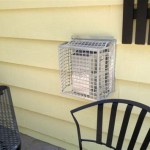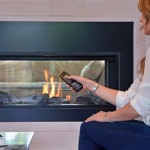Wood Fireplace Blower Replacement: A Comprehensive Guide
A wood fireplace blower, also known as a fireplace fan, is a valuable accessory that enhances the efficiency and heating capacity of a traditional wood-burning fireplace. These blowers circulate warm air produced by the fireplace into the surrounding room, distributing heat more evenly and reducing heat loss up the chimney. Over time, however, fireplace blowers can fail due to various factors, necessitating replacement. This article provides a comprehensive guide to understanding the need for wood fireplace blower replacement, identifying signs of failure, selecting the correct replacement blower, and performing the replacement process effectively.
Understanding the Function of a Fireplace Blower
A fireplace blower typically consists of a fan unit, an electrical motor, and a housing designed to fit within the firebox or beneath the fireplace. The blower operates by drawing cool air from the room and passing it over the heated surfaces of the fireplace, such as the firebox walls or heat exchanger tubes. The warmed air is then forced back into the room, creating a convection current that helps to distribute heat more effectively. This process significantly increases the amount of usable heat derived from burning wood, making the fireplace a more efficient heating source.
The benefits of using a fireplace blower extend beyond mere heat distribution. A blower can help to reduce energy costs by supplementing the primary heating system, especially in colder climates. It can also create a more comfortable living environment by eliminating cold spots and ensuring a more consistent temperature throughout the room. For individuals who rely on wood fireplaces for supplemental heating, a properly functioning blower is essential.
Identifying the Need for Blower Replacement
Recognizing the signs of a failing fireplace blower is crucial for maintaining the fireplace's heating efficiency and safety. Several indicators can signal the need for replacement. One of the most common signs is a noticeable decrease in airflow. If the blower is running, but the amount of warm air being circulated is significantly reduced compared to its normal output, it suggests that the motor may be weakening or the fan blades may be damaged or obstructed.
Unusual noises emanating from the blower unit are another important indicator. Grinding, squealing, or rattling sounds often point to worn-out bearings, a damaged fan blade, or loose components within the motor assembly. These noises can also indicate that the motor is struggling to operate efficiently, placing additional strain on the system and potentially leading to complete failure. Ignoring these sounds can result in more significant damage and a more costly repair.
Overheating of the blower unit is a serious concern and should be addressed immediately. If the blower's housing becomes excessively hot to the touch, it suggests that the motor is working too hard or that there is a blockage preventing proper ventilation. Overheating can damage the motor and surrounding components, potentially creating a fire hazard. In such cases, it is imperative to turn off the blower and investigate the cause of the overheating before further use.
Electrical issues, such as intermittent operation or failure to start, can also indicate a problem with the blower's motor or wiring. If the blower only works sporadically or if it fails to power on at all, it suggests that there may be a loose connection, a faulty switch, or a failing motor winding. Troubleshooting these electrical issues may require the assistance of a qualified electrician to ensure safety and prevent further damage.
Finally, physical damage to the blower unit, such as cracked housing, broken fan blades, or corroded components, can compromise its functionality and safety. Visible damage should be addressed promptly to prevent further deterioration and ensure that the blower operates effectively. In many cases, replacing the entire blower unit is the most cost-effective and reliable solution.
Selecting the Correct Replacement Blower
Choosing the right replacement blower is critical to ensuring compatibility, optimal performance, and longevity. Several factors should be considered when selecting a new blower unit. One of the most important considerations is the compatibility with the specific fireplace model. Fireplace manufacturers often specify the type and size of blower recommended for each of their models. Consulting the fireplace's owner's manual or contacting the manufacturer directly can provide valuable information regarding the correct blower specifications.
Blower dimensions are another crucial factor to consider. The replacement blower must fit properly within the designated space in the fireplace without obstructing airflow or interfering with other components. Carefully measuring the dimensions of the existing blower and comparing them to the specifications of the replacement unit is essential. Height, width, and depth are all important measurements to consider.
Airflow capacity, measured in cubic feet per minute (CFM), is a key indicator of the blower's performance. A higher CFM rating generally indicates a more powerful blower that can circulate a greater volume of air. The appropriate CFM rating for a fireplace blower depends on the size of the fireplace and the area to be heated. Consulting the fireplace manufacturer's recommendations or seeking advice from a qualified HVAC professional can help determine the optimal CFM rating for a particular application.
Noise level is another factor that can influence the choice of replacement blower. Some blowers are designed to operate more quietly than others. If noise is a concern, consider selecting a blower with a lower decibel (dB) rating. Look for features such as vibration-dampening mounts and optimized fan blade designs that minimize noise. It is also advisable to read customer reviews to get an idea of the blower's actual noise level in real-world conditions.
Finally, consider the quality and durability of the replacement blower. Choose a blower from a reputable manufacturer known for producing reliable and long-lasting products. Look for features such as heavy-duty motors, high-quality bearings, and durable construction materials. A blower with a good warranty is also a sign of quality and provides peace of mind.
Performing the Blower Replacement Process
Once the correct replacement blower has been selected, the next step is to perform the replacement process. Safety should always be the top priority when working with electrical appliances. Before starting any work, disconnect the fireplace from the power source by unplugging it from the wall outlet or turning off the circuit breaker. This will prevent the risk of electrical shock.
Gaining access to the existing blower is usually the first step. This may involve removing fireplace panels, grates, or other components to expose the blower unit. Consult the fireplace's owner's manual for specific instructions on how to access the blower compartment. Be careful when removing any components to avoid damaging them.
Disconnect the electrical connections to the old blower. This typically involves unplugging the blower's power cord from an outlet inside the fireplace or disconnecting wires using wire connectors. Take note of the wire connections before disconnecting them to ensure that the new blower is wired correctly. Consider taking a photograph of the wiring configuration for reference.
Remove the old blower from its mounting location. This may involve unscrewing mounting screws or releasing clips that hold the blower in place. Be careful when removing the blower, as it may be heavy or awkward to handle. Dispose of the old blower properly according to local regulations.
Install the new blower in the same location as the old blower. Secure the blower using the same mounting hardware that was used for the old blower. Ensure that the blower is properly aligned and that there are no obstructions to airflow.
Reconnect the electrical connections to the new blower. Follow the wiring diagram or the photograph taken earlier to ensure that the wires are connected correctly. Use wire connectors to securely join the wires. Ensure that all connections are tight and secure.
Reinstall any fireplace panels, grates, or other components that were removed to access the blower. Ensure that all components are properly aligned and securely fastened. Double-check that all electrical connections are properly made and that there are no loose wires.
Test the new blower to ensure that it is functioning correctly. Plug the fireplace back into the power outlet or turn on the circuit breaker. Turn on the blower and observe its operation. Ensure that the blower is circulating air and that there are no unusual noises or vibrations. If the blower does not work or if there are any issues, consult a qualified electrician or HVAC technician for assistance.
Maintenance of the new blower is essential for prolonging its lifespan and ensuring optimal performance. Regularly clean the blower unit to remove dust and debris that can accumulate on the fan blades and motor. Use a vacuum cleaner or a soft brush to clean the blower. Inspect the blower regularly for signs of wear or damage. Replace any worn or damaged components as needed. Following these maintenance tips will help to keep the fireplace blower running smoothly for years to come.

How To Replace Your Fireplace Blower Do Done

Ep 62 Napoleon Wood Stove Replacement Fireplace Blower Fan Kit Hearth Trends

Blower Motor Replacement For The Security Bis 1 2

Fireplace Blower Fans What You Need For Heat Full Service Chimney

Appalachian Wood Stove Convection Fan Blower Motor 1c180

Bis Fireplace Blower Motor Kit Many Models Uzy5 Uzy7

Squirrel Cage Blower Motor For Old Blaze King Z1714a Discontinued Hechler S Mainstreet Hearth Home Troy Missouri

Blower Motor 1m180

Enerzone Wood Fireplace Blower Valcourt Drolet Many Models 44122

Fireplace Blowers Explained How Fans Work Regency








